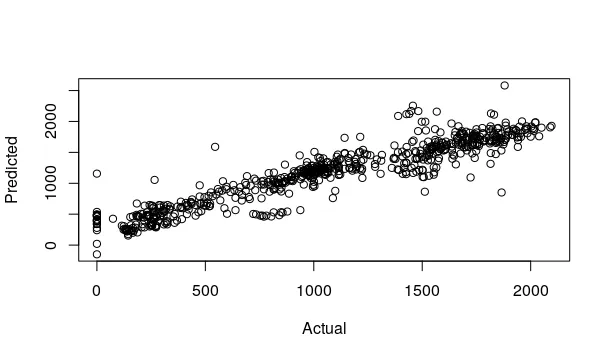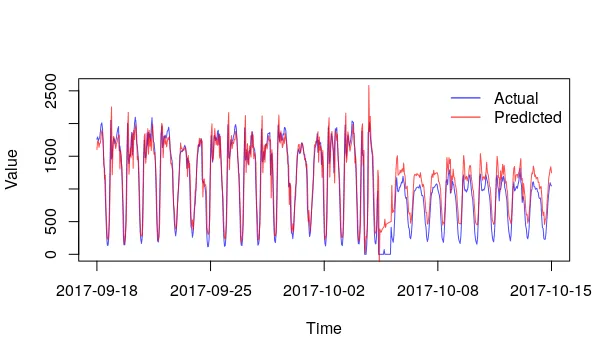我正在处理数据集,使用ARIMA进行预测。我接近最后一步,但是出现了错误,无法找到参考资料来确定我缺少什么。
每次执行以下命令时,我都会收到错误消息:
ForcastData<-forecast(fitModel,testData)
Error in rep(1, n.ahead) : invalid 'times' argument
我将简要介绍我的工作,其中我将数据集从数据框架更改为时间序列,并进行了所有测试以检查波动性,并检测数据是否静止。
然后,我得到了“DataAsStationary”这样干净好用的数据来应用ARIMA模型。但是,由于我想在训练数据上训练模型并在其他部分数据上进行测试,所以我将数据集分成70%的训练和30%的测试:
ind <-sample(2, nrow(DataAsStationary), replace = TRUE, prob = c(0.7,0.3))
traingData<- DataStationary1[ind==1,]
testData<- DataStationary1[ind==2,]
我使用了自动选择算法,发现Arima(2,0,3)是最佳模型。
autoARIMAFastTrain1<- auto.arima(traingData, trace= TRUE, ic ="aicc", approximation = FALSE, stepwise = FALSE)
我必须提到,我确实检查了残差是否不相关(白噪声),并对其进行了处理。
library(tseries)
library(astsa)
library(forecast)
然后我使用训练数据集来拟合模型:
fitModel <- Arima(traingData, order=c(2,0,3))
fitted(fitModel)
ForcastData<-forecast(fitModel,testData)
output <- cbind(testData, ForcastData)
accuracy(testData, ForcastData)
plot(outp)
找不到关于以下错误的任何资源:
Error in rep(1, n.ahead) : invalid 'times' argument
有什么建议吗!!真的很需要。
我已经尝试了。
ForcastData<-forecast.Arima(fitModel,testData)
但是我遇到以下错误:
无法找到forecast.Arima!
你有任何想法为什么会出现这个错误吗?


forecast.Arima未找到错误,请参考 此答案 ,该答案是针对forecast包的不同问题。 - duckmayr